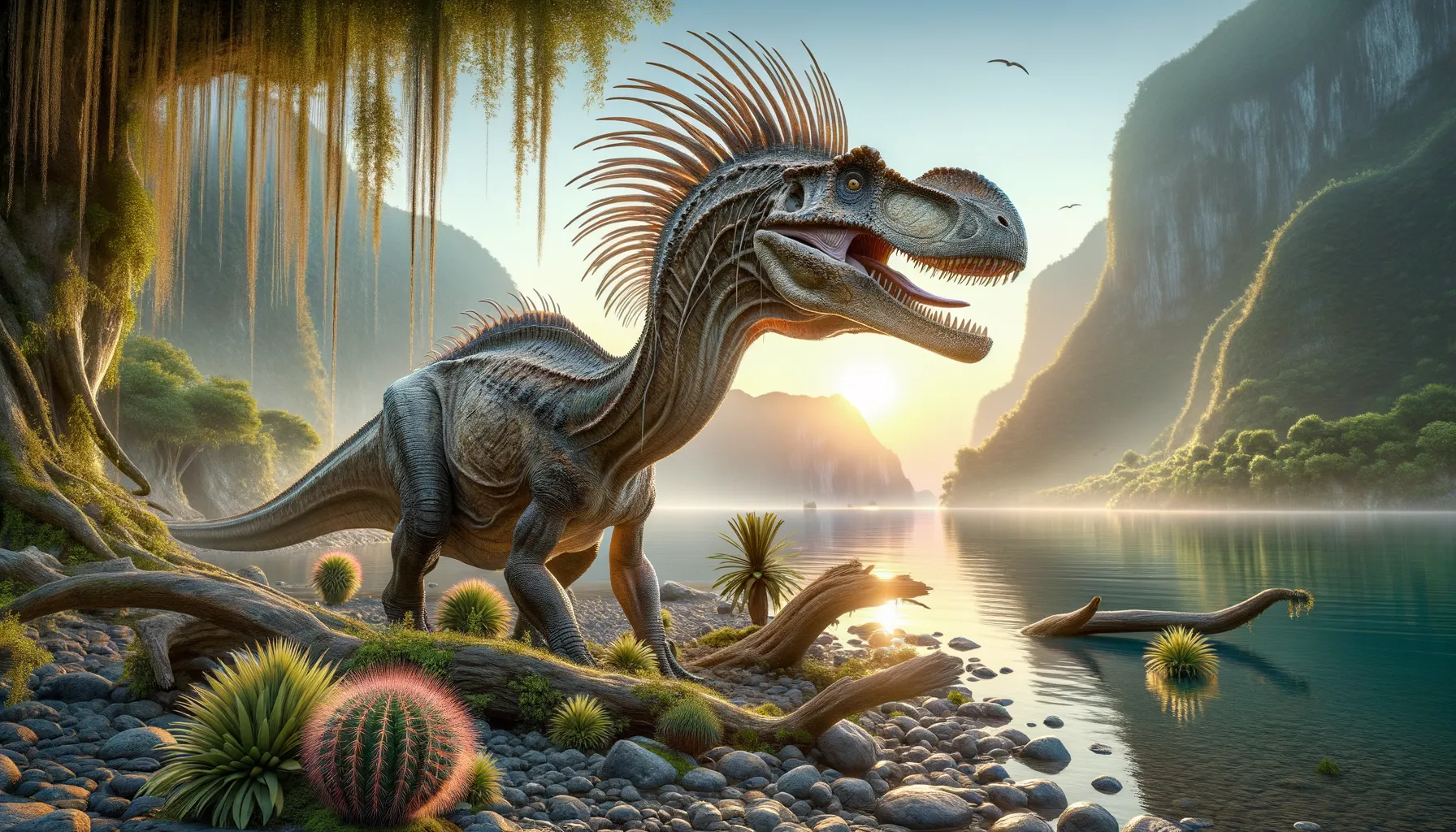
Gilmoreosaurus
Discover the duck-billed marvel of the past.
Period
Cretaceous
Length
About 6 to 8 meters in length.
Height
Roughly 3 to 4 meters tall.
Weight
Approximately 2 to 3 tons.
Gilmoreosaurus was an herbivorous dinosaur known for its duck-billed appearance and was part of the hadrosaur family. It lived during the Late Cretaceous period, primarily found in Asia. Its fossils offer valuable insights into the diversity and adaptation of herbivorous dinosaurs during this era, showcasing unique dental and skull structures suited to its plant-based diet.
Diet
Gilmoreosaurus primarily fed on vegetation, including ferns, conifers, and flowering plants. Its complex dental structure enabled it to efficiently chew tough plant material, adapting well to its herbivorous lifestyle.
Hunting
As a herbivore, Gilmoreosaurus did not hunt but foraged for plant matter. It likely spent much of its time grazing low-lying vegetation in its habitat.
Environmental challenges
Living in the Late Cretaceous, Gilmoreosaurus faced challenges such as changing climates and competing with other herbivores for resources. The period was marked by significant geological and climatic shifts that required adaptability. Its ability to chew tough vegetation was a key survival trait.
Speed
Moderate, similar to other duck-billed dinosaurs.
Lifespan
Estimated around 20 to 30 years.
First discovery
Discovered in Mongolia in 1923.
Fun Facts
- Gilmoreosaurus was a herbivorous dinosaur that lived during the Late Cretaceous period about 77 to 73 million years ago.
- It is known from fossils found primarily in what is now China and Mongolia.
- Gilmoreosaurus was named after Charles W. Gilmore, an American paleontologist known for his work on dinosaur fossils.
- This dinosaur belonged to a group called hadrosaurs, commonly known as 'duck-billed dinosaurs' because of their unique snouts shaped like a duck's bill.
- Excavations suggest that Gilmoreosaurus might have traveled in herds, similar to many of its hadrosaur relatives.
- Its teeth were specially adapted to grind up tough plant material, showing it had a well-developed chewing mechanism.
- Gilmoreosaurus is not as famous as some of its hadrosaur relatives but adds important information about the diversity of dinosaur life in its era.
Growth and Development
Gilmoreosaurus hatched from eggs and experienced rapid early growth rates, a common trait among dinosaurs to reach a size that reduced vulnerability. As it matured, the dinosaur developed its distinct duck-bill and a robust dental battery to process a plant-based diet.
Habitat
This dinosaur inhabited lush floodplains and forests, areas rich with diverse plant life. Its environment provided ample food supply and access to water, critical for its survival. Seasonal changes would have affected resource availability, requiring some migration or adaptation.
Interaction with other species
Gilmoreosaurus likely coexisted with various other herbivores and predators in its ecosystem, possibly moving in herds for protection. Social interactions may have included group foraging and nesting. Predators in its environment posed ongoing threats, necessitating vigilance and collective defense.
Natural lifespan
In a natural setting, Gilmoreosaurus might have lived for 20 to 30 years.
Reproduction
Reproduction involved laying eggs, possibly in large communal nesting sites to enhance survival rates. Parental care might have extended to guarding nests and young, ensuring their early growth and development. Nesting behaviors were likely influenced by the need for suitable, safe locations with abundant resources nearby.
Social behaviour
Gilmoreosaurus may have exhibited social behavior typical of hadrosaurs, including living in groups that provided safety in numbers. Social structures could have been loose but effective at coordinating movement and foraging. Communication, although speculative, might have included vocalizations or body language.
Fossil locations
Fossils of Gilmoreosaurus have been predominantly discovered in Mongolia, providing essential insights into its distribution and the diverse dinosaur fauna of the region. These fossils have allowed paleontologists to reconstruct aspects of its behavior and environment during the Late Cretaceous period.
